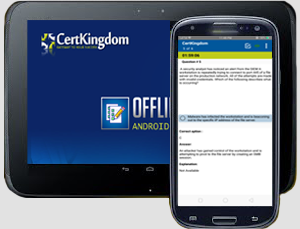Exam: 300-425

|
|||||||||||||||||||||||||||
300-425 Designing Cisco Enterprise Wireless Networks (300-425 ENWLSD) Exam
Designing Cisco Enterprise Wireless Networks
Duration: 90 minutes
Languages: English, Japanese
Price: $ USD, plus tax or use Cisco Learning Credits
Exam overview
This exam tests your knowledge of wireless network design, including:
Site surveys
Wired and wireless infrastructure
Mobility
WLAN high availability
Exam preparation
Prepare for your certification exam with official Cisco training or study on
your own with self-study resources found on the Cisco Learning Network.
Official Cisco training
Designing Cisco Enterprise Wireless Networks (ENWLSD)
Self-study resources
ENWLSD training videos
Schedule an exam In-person
Test at one of our highly secure convenient locations.
Online
Test anytime, anywhere in a highly secure environment.
Designing Cisco Enterprise Wireless Networks v1.1 (ENWLSD 300-425) is a 90minute
exam associated with the CCNP Enterprise Certification. This exam certifies a
candidate's knowledge of wireless network design including site surveys, wired
and wireless infrastructure, mobility and WLAN high availability. The course,
Designing Cisco Enterprise Wireless Networks, helps candidates to prepare for
this exam.
The following topics are general guidelines for the content likely to be
included on the exam. However, other related topics may also appear on any
specific delivery of the exam. To better reflect the contents of the exam and
for clarity purposes, the guidelines below may change at any time without
notice.
25% 1.0 Wireless Site Survey
1.1 Collect design requirements and evaluate constraints
1.1.a Client density
1.1.b Real time applications
1.1.c AP type
1.1.d Deployment type (data, location, voice, video)
1.1.e Security
1.2 Describe material attenuation and its effect on wireless design
1.3 Perform and analyze a Layer 1 site survey
1.4 Perform a pre-deployment site survey
1.5 Perform a post deployment site survey
1.6 Perform a predictive site survey
1.7 Utilize planning tools and evaluate key network metrics (Ekahau, AirMagnet,
PI, Chanalyzer, Spectrum Analyzer)
30% 2.0 Wired and Wireless Infrastructure
2.1 Determine physical infrastructure requirements such as AP power,
cabling, switch port capacity, mounting, and grounding
2.2 Determine logical infrastructure requirements such as WLC/AP licensing
requirements based on the type of wireless architecture
2.3 Design radio management
2.3.a RRM
2.3.b RF profiles
2.3.c RxSOP
2.4 Apply design requirements for these types of wireless networks
2.4.a Data
2.4.b Voice and video
2.4.c Location
2.5 Design high-density wireless networks and their associated components
2.6 Design wireless bridging (mesh)
2.6.a Modes of operation
2.6.b Ethernet bridging
2.6.c WGB and roaming
25% 3.0 Mobility
3.1 Design mobility groups based on mobility roles
3.2 Optimize client roaming
3.3 Validate mobility tunneling for data and control path
20% 4.0 WLAN High Availability
4.1 Design high availability for controllers
4.1.a Network availability through LAG
4.1.b Stateful Switchover (SSO)
4.1.c Anchor controller priority and redundancy
4.2 Design high availability for APs
4.2.a AP prioritization
4.2.b Fall-back (assigning primary, secondary, and tertiary)
4.2.c Embedded Wireless Controller (EWC)
300-425 Brain Dumps Exam + Online / Offline and Android Testing Engine & 4500+ other exams included
$50 - $25 (you save $25)
Buy Now
Sample Question:
QUESTION 2
Which UDP port numbers are used for exchange mobility packets in an AireOS
wireless deployment?
A. UDP 16666 for control plane, EoIP (IP protocol 97) for data plane
B. UDP 16668 for control plane, UDP 16667 for data plane
C. UDP 16667 for control plane, UDP 16666 for data plane
D. UDP 16666 for control plane, UDP 16667 for data plane
Answer: A
QUESTION 3
A customer asks an engineer to explain the concept of mobility domains and
mobility groups. Which statement does the engineer respond with?
A. A mobility group does not constrain the distribution of security context of a
client and also does not constrain AP fail-over between controllers when the WLC
are in the same mobility domain.
B. If WLCs are in the same mobility domain, they communicate with each other
but, if an anchor WLC is present it must be in the same mobility domain for
communication to be possible.
C. If WLCs are in the same mobility domain, they communicate with each other.
Mobility groups constrain the distribution of security context of a client and
also constrain AP fail-over between controllers.
D. WLCs do not need to be in the same mobility domain to communicate with each
other. Mobility groups constrain the distribution of security context of a
client and also constrain AP fail-over between controllers.
Answer: C
QUESTION 4
An engineer is designing a wireless deployment for a university auditorium.
Which two features can be used to help deal with the issues introduced by high
AP count? (Choose two.)
A. TSPEC
B. RXSOP
C. TPC
D. LSS
E. DFS
Answer: C,E
QUESTION 5
A wireless engineer is designing a wireless network to support real-time
applications over wireless.
Which IEEE protocol must the engineer enables on the WLC so that the number of
packets that are
exchanged between an access point and client are reduced and fast roaming
occurs?
A. 802.11w
B. 802.11r
C. 802.11i
D. 802.11k
Answer: D
QUESTION 6
A network administrator of a global organization is collapsing all
controllers to a single cluster
located in central Europe. Which concern must addressed?
A. Some channels may not be available consistently across the organization.
B. Different RF policies per office are not available in this configuration.
C. Syslog must be configured to the time-zone of the NMS platform.
D. Centralized controllers cannot uniformly authenticate global users.
Answer: A
QUESTION 7
An engineer must ensure that the new wireless LAN deployment can support
seamless roaming
between access points using a standard based on an amendment to the 802.11
protocol.
Which protocol must the engineer selects?
A. 802.11i
B. 802.11ac
C. 802.11r
D. 802.11e
Answer: C
QUESTION 8
A high-density wireless network is designed. Which Cisco WLC configuration
setting must be
incorporated in the design to encourage clients to use the 5 GHz spectrum?
A. Band Select
B. RRM
C. Cisco Centralized Key Management
D. load balancing
Answer: A
QUESTION 9
A network engineer is preparing for an office site survey with a height of
2.5 meters. Which three components are recommended to complete the survey?
(Choose three.)
A. Use a battery pack to power APs
B. Use a drawing of the office space to draw AP and client placements.
C. Use DoS attack on APs while measuring the throughput.
D. Use APs with directional antennas.
E. Use APs with external antennas.
F. Use APs with built-in antennas.
Answer: A,B,F
QUESTION 10
A wireless engineer must optimize RF performance for multiple buildings with
multiple types of
construction and user density. Which two actions must be taken? (Choose two.)
A. Configure Flexconnect groups for each building.
B. Configure WMM profiles for each building.
C. Configure AP groups for each area type.
D. Configure RF profiles for each area type.
E. Enable DTPC on the network.
Answer: C,D
Buy Complete
Students Feedback / Reviews/ Discussion
Bandile Ndlela Voted 2 weeks ago
Hello, with the new version released at 20th september, if this update all
questions?
upvoted 32 times
AGUIDI MAHAMAT Highly 4 months ago - Chad
95% of the questions are valid. Review the answers. Review discussions of why
some answers are inaccurate. This will provide better study and understanding of
content.
upvoted 32 times
Mahendrie Dwarika Most Recent 1 week - South Africa
More than 90% of the question on the exam were from here. Thxs Exam Topics
upvoted 5 times
valisetti ravishankar 3 weeks, 2 days ago - USA
Thank you so much for providing excellent study material. I prepared for my
350-501 exam and aced the exam with 950 marks
upvoted 7 times
Dos Santos Daniel 1 month, 1 week ago - Brazil
Passed My Exam on 19th , 91 multiple choice question , 5 new question and 86
question in here.
upvoted 23 times
logged members Can Post comments / review and take part in Discussion
Certkingdom Offline Testing Engine Simulator Download
Prepare with yourself how CertKingdom Offline Exam Simulator it is designed specifically for any exam preparation. It allows you to create, edit, and take practice tests in an environment very similar to an actual exam.
Supported Platforms: Windows-7 64bit or later - EULA | How to Install?
FAQ's: Windows-8 / Windows 10 if you face any issue kinldy uninstall and reinstall the Simulator again.
Download Offline Simulator-Beta
Certkingdom Testing Engine Features
- Certkingdom Testing Engine simulates the real exam environment.
- Interactive Testing Engine Included
- Live Web App Testing Engine
- Offline Downloadable Desktop App Testing Engine
- Testing Engine App for Android
- Testing Engine App for iPhone
- Testing Engine App for iPad
- Working with the Certkingdom Testing Engine is just like taking the real tests, except we also give you the correct answers.
- More importantly, we also give you detailed explanations to ensure you fully understand how and why the answers are correct.
Certkingdom Android Testing Engine Simulator Download
Take your learning mobile android device with all the features as desktop offline testing engine. All android devices are supported.
Supported Platforms: All Android OS EULA
Install the Android Testing Engine from google play store and download the app.ck from certkingdom website android testing engine download

Certkingdom Android Testing Engine Features
- CertKingdom Offline Android Testing Engine
- Make sure to enable Root check in Playstore
- Live Realistic practice tests
- Live Virtual test environment
- Live Practice test environment
- Mark unanswered Q&A
- Free Updates
- Save your tests results
- Re-examine the unanswered Q & A
- Make your own test scenario (settings)
- Just like the real tests: multiple choice questions
- Updated regularly, always current




